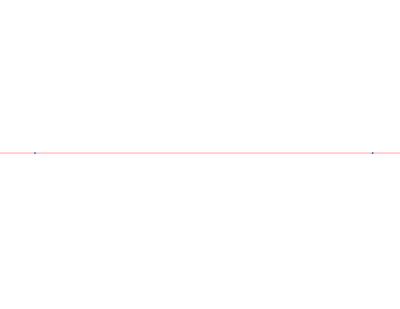Now
for many of us who have heard of the movement “The Renaissance” we have also heard about the technique Perspective and it’s a crucial part of
what made the buildings in renaissance art look three dimensional.
Now
it’s still part of art, whether you’re taking a drawling class or drawling
comics, learning perspective is a great tool for getting rid of the flatness in
your work. I will be going over the basic techniques involved in creating a
perspective 1,2 and 3-point perspective.
(Now two things you need for the line work for
perspective is a ruler and a piece of paper)
The Two Basics
Now for perspective, we’ll start by breaking it down to its two primary parts.
Now for perspective, we’ll start by breaking it down to its two primary parts.
First
we need a Horizon Line. This line is
meant to draw out where the horizon in our piece. When an object is placed
above it we can see under it but not over it, when placed under we can see
above but not below our object and when placed in the middle you can see the
only the front of object (and maybe one of the sides).
Then
we need a Vanishing Point, this will
show our main focus in the piece. This is where an object will draw back to
when we start. Now your point doesn’t need to be in the center of the piece but
needs to be on the Horizon Line. As a
side note, when we go to 2-point and 3-point perspective there will be more Vanishing Points added.
Try it yourself: 1-point perspective
To start off 1-point perspective we need to make a Horizon Line down the I middle of the page (holding the paper horizontally)
To start off 1-point perspective we need to make a Horizon Line down the I middle of the page (holding the paper horizontally)
Next
we add our Vanishing Point on our Horizon Line and we are ready for the fun part.
We
are going to add our objects. Start by making squares in the middle, off to the
sides, above and below the Horizon Line. We’ll call these flat parts of your
squares, Faces from now on.
Now
go and take your ruler and corner of each Face
and follow it back to the Vanishing Point.
This adds depth to you Faces turning
them into a seemingly 3D object.
After you adding depth you can add lines on
the sides and top to show the effect of depth.
Try it yourself: 2-point perspective
Now as mentioned earlier, the “2-point” in this perspective adds two Vanishing Points and unlike the 1-point perspective we will use lines vertical as our object that we call Edges.
Now as mentioned earlier, the “2-point” in this perspective adds two Vanishing Points and unlike the 1-point perspective we will use lines vertical as our object that we call Edges.
Now
the Horizon Line can be set up as it
was in the last part but try to space out the two Vanishing Points so that the depth applied to the Edges won’t appear distorted.
Now
add your first Edge below or above the Horizon
Line and connect the tips of each Edge
to each Vanishing Point.
 | |
| Step 2 |
 |
| Step 3 |
Next
along the 4 of the lines you created going back to the Vanishing Points make another Edge
on each side of the first one.
Finally
take 2 Edges and connect each Edge to the Vanishing Point on the opposite side.
Try it yourself: 3-point perspective
Now finally we have 3-point perspective.
Now finally we have 3-point perspective.
The
setup for this one is similar to 2-point with the Horizon Line and two Vanishing
Points on it but now we add a third Vanishing
Point that isn’t on the Horizon Line.
This
third Vanishing Point is either
placed on the top or bottom of the Horizon
Line.
The
object for 3-point perspective starts off as a Point itself and can be placed anywhere above or below the Horizon Line. Then like the others we
make lines to connect to the Point to
the 3 Vanishing Points.
Then make 3 Points on the
lines and draw them back to the each of Vanishing
Points.
Then
finally you will see you 3-point cube.
Now
go practice these skills and then you can [Share Your Stuff]



















Excellent lesson on perspective. I hope others who are reading your blog will practice this. It helps to make drawing and making things look "right" make sense. Thanks for the great tutorial!
ReplyDelete